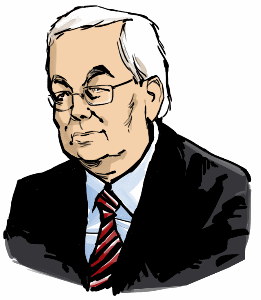The Shakespeare Authorship Question
Wikipedia: The Shakespeare authorship question is the argument that someone other than William Shakespeare of Stratford-upon-Avon wrote the works attributed to him. Anti-Stratfordians—a collective term for adherents of the various alternative-authorship theories—say that Shakespeare of Stratford was a front to shield the identity of the real author or authors, who for some reason did not want or could not accept public credit. Although the idea has attracted much public interest, all but a few Shakespeare scholars and literary historians consider it a fringe belief and for the most part acknowledge it only to rebut or disparage the claims.
Shakespeare By Another Name – Author´s Note
© Mark Kendall Anderson
In the summer of 1993, I first learned about an undercurrent of dissent among accomplished scholars and writers who, over the past two and a half centuries, have doubted the conventional biography of “Shakespeare.” I was astonished. Here was perhaps the greatest author who had ever lived, and legendary figures in their own right say he actually wrote nothing? Was this the biggest case of mistaken identity in history? What had haunted the likes of Henry James, Sigmund Freud, Mark Twain and Walt Whitman so much? Why had I never heard of this before? […]
As I began researching the issue, I found that the Shake-speare question was also considered a heresy in the church of England letters. I recall early encounters with otherwise reasonable people who became irrational and redfaced with anger when the words “earl of Oxford” were uttered in concordance with “Shakespeare.” This unfortunate fact of life remains unchanged today. (Sub-title: The Life of Edward de Vere, Earl of Oxford, The Man Who Was Shakespeare, Gotham Books 2005, p. 411.)
The Mousetrap
In Hamlet’s opening scene, Francisco replies “Not a mouse stirring” when Bernardo asks “Have you had a quiet guard?” In ancient creation myth, “time” is “cheese” that is nibbled on by “a mouse”. When TIME has come to an end, there is no more “stirring” of “cheese-nibbling mouse”. In Hamlet’s play-within-the-play, the End of Time is acted out in the following dialogue (First folio, Act III, Sc. ii):
Ophelia:
6561 = The King rises.
Hamlet:
14245 = What, frighted with false fire.
Queene:
8414 = How fares my Lord?
Polonius:
6848 = Giue o’re the Play.
King:
10045 = Giue me some Light. Away.
All:
14262 = Lights, Lights, Lights.Exeunt.
60375
The Light of Reason brings down the curtain on an Idiot’s tale – a Stratfordian poor player That struts and frets his hour upon the stage [exits] And then is heard no more. (Macbeth in Act V, Sc. v.)
I. Idiot Actor’s Hour Upon The Stage
17252 = Gulielmus, filius Johannes Shakspere – baptismal name
365 = Year/Hour on Stage
10026 = Will Shakspere, gent – burial name
27643
II. The End of Time
7302 = The Mousetrap
60375 = Not a mouse stirring – see above
-2118 = End of (minus) Time
65559
As in 27643 + 65559 = 93202.
III. a. Stratfordian Idiot Player’s …
17252 = Gulielmus, filius Johannes Shakspere – baptismal name
10026 = Will Shakspere, gent – burial name
27278
III. b. … Composite Roots in Brennu-Njálssaga¹
10210 = Hrútr Herjólfsson
6936 = Björn Kaðalsson
9132 = Kári Sölmundarson
1000 = Advent of Light/Christianity in “Year” 1000 A.D.
27278
IV. Stratfordian As Cross of Jesus Crucified
Matt. 27:37 (KJB 1611)
16777 = THIS IS IESVS THE KING OF THE IEWES
Mark 15:26
9442 = THE KING OF THE IEWES
Luke 23:38
13383 = THIS IS THE KING OF THE IEWES
John 19:19
17938 = IESVS OF NAZARETH, THE KING OF THE IEWES
57540
V. The Crucifixion
Alpha – Stratfordian’s baptism
2602 = 26 April – second month of the year old-style
1564 = 1564 A.D.
Omega – Stratfordian’s burial
2502 = 25 April
1616 = 1616 A.D.
100 = The End – It is finished. (John 19:30)
8384
As in 27278 + 57540 + 8384 = 93202.
***
¹ In Brennu-Njálssaga, Hrútr Herjólfsson is one of Two Brothers, who beds a Queen/Dark Lady abroad, betraying his betrothed in Iceland. The Dark Lady imposes on him a curse as a result of which he cannot consummate his marriage to his betrothed. Shakespeare scholars have been puzzled how to explain the Stratfordian’s betrothal to Anna Whateley the day before he hooked up with Anne Hath A Way.
Björn Kaðalsson is a loudmouthed braggart and vicious coward who is taken on a grand tour by Kári Sölmundarson, during which they kill several opponents, with Björn seeking shelter behind Kári when the going got tough – but having to be restrained from killing someone who had become unable to defend himself.
Kári Sölmundarson is Njáll´s son-in-law, who alone escapes alive from the Burning of Njáll. According to Einar Pálsson, Iceland´s foremost expert on Brennu-Njálssaga and author of the 11-volume Rætur íslenzkrar menningar (Roots of Icelandic Culture) series, Kári personifies TIME. In ancient myth, TIME was coextensive with SPACE – a few thousand years before Einstein.
The Earl of Oxford issue will be addressed separately – here it should be noted that the evidence is next to overwhelming that Mark Kendall Anderson was absolutely right – that Edward de Vere a.k.a. Edward Oxenford was indeed Shakespeare by another name.
It is a little more complicated than that – the evidence is equally persuasive that Oxenford passed on his work to Francis Bacon and Ben Jonson “to perfect it“.
***
A calculator that converts letters into numerical values is posted at:
http://www.light-of-truth.com/ciphersaga.htm

 Gunnar Tómasson
Gunnar Tómasson